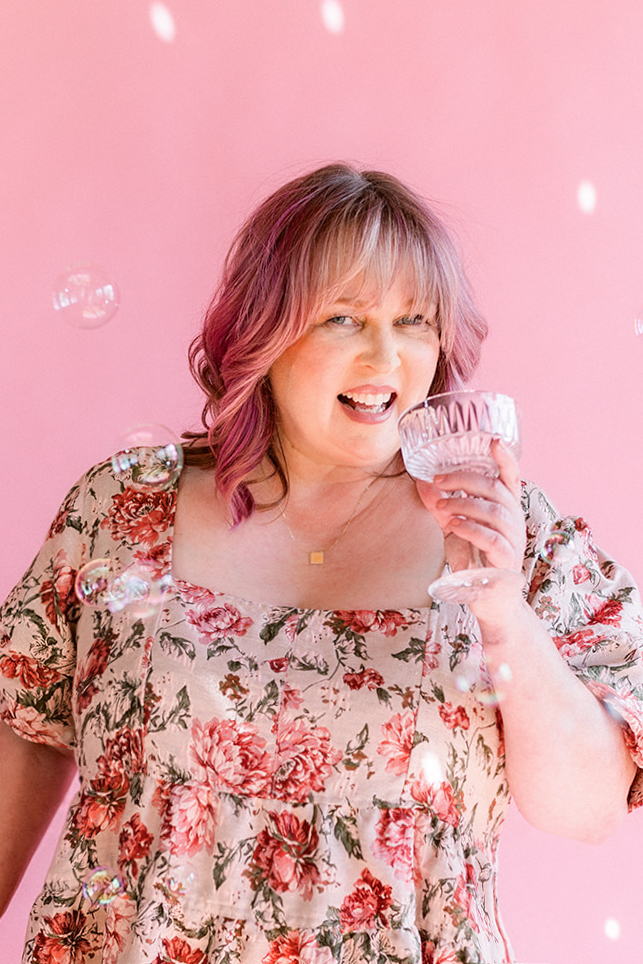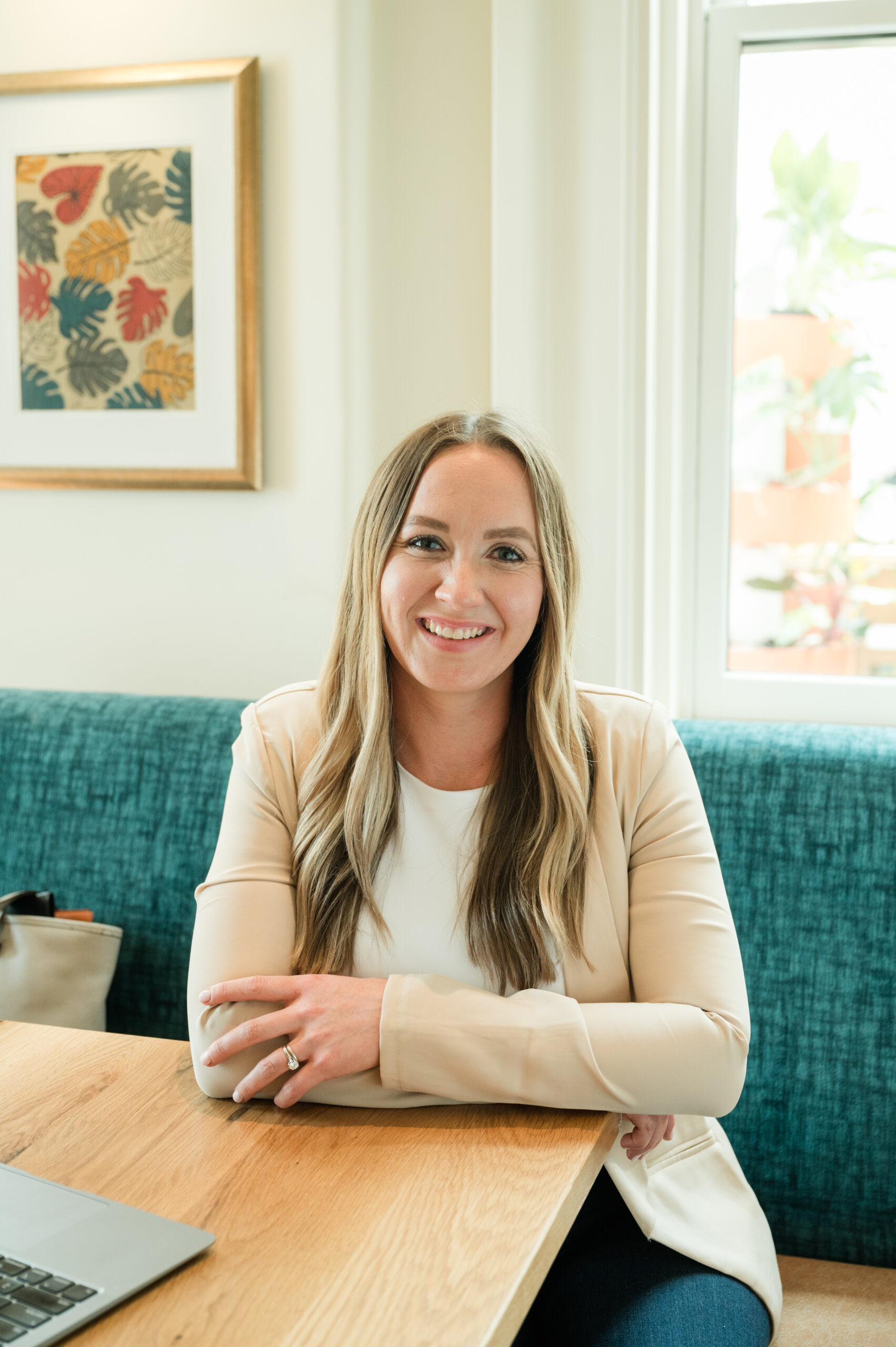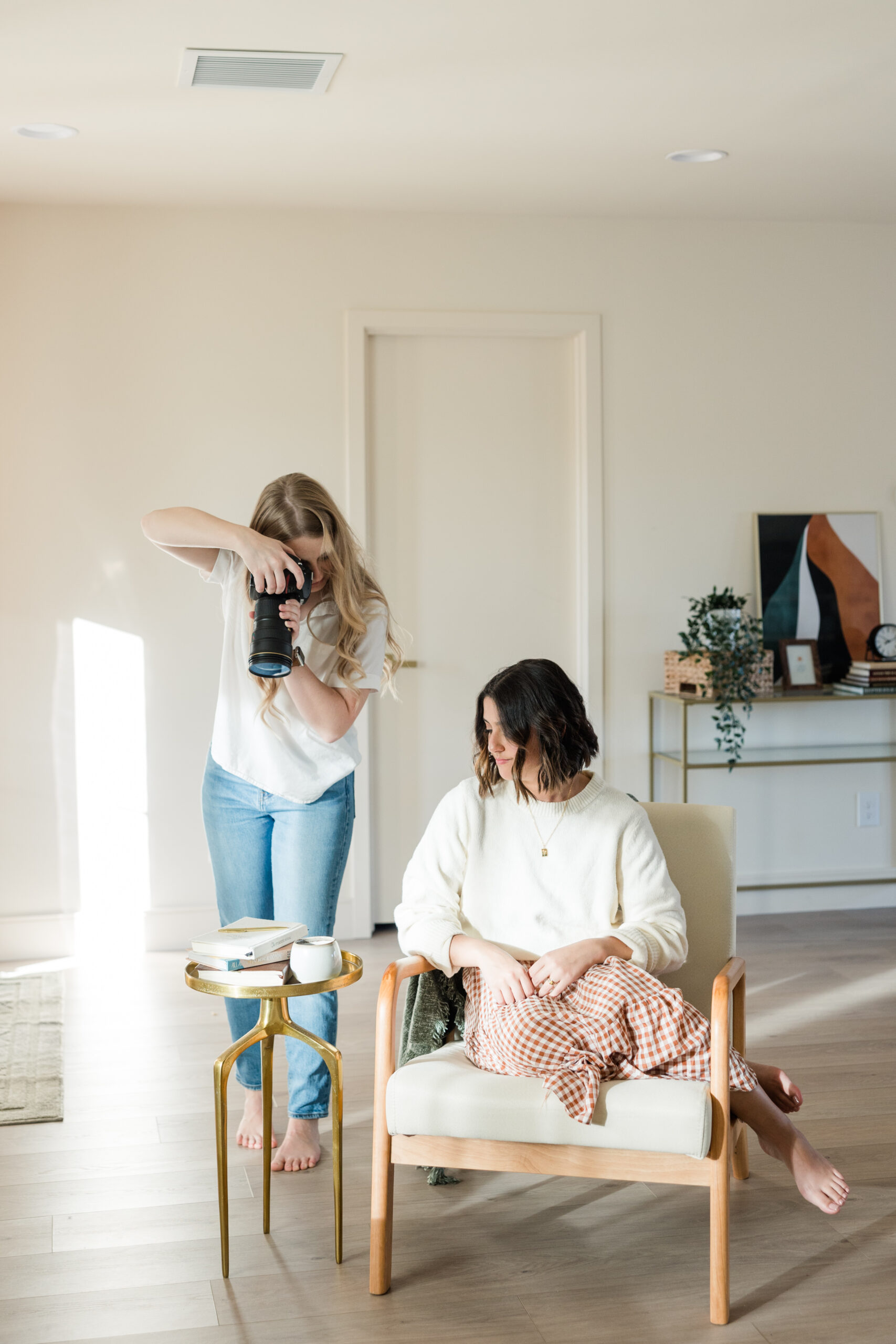A Blueprint for More Original Content → Swipe these 4 Formulas
My legs had fallen asleep. I was miles down a research rabbit hole and at least 1.5hrs over the timer I’d set for the “generate content ideas” task on my to-do list. [When it comes to research, I can get a bit carried away.]
Four pages and two lattes later, I had plentyyyy of ideas. The problem? I was staring at a document that held approximately 62 decent ideas for 6 blog posts I needed to write for that quarter.
It’s like I handed myself a massive Mexican restaurant menu and the waiter is quickly approaching with the expectation that I’d have my order locked and loaded – when I’m in fact still deciding if I’m an enchilada girl today or should I try that new burrito? But, tacos gosh those are good. And wait, I should really try something new!
Paralysis of analysis, option overload, fear of choosing the wrong thing.
Copy+paste whichever descriptor you identify with most either of these two situations.
The thing is, we are living in the “age of mass-inspiration”.
All the evidence is right there in that glowing screen you’re reading this post on.
And while inspiration is a piece of creating originality, it’s only a small part of it – though selfishly, I would LOVEEE for it to be the whole.
So, today? We’ll be tearing down a few common misconceptions about creativity, originality, and inspiration for content creation. Then we’ll set a new foundation for simplicity in your approach with 4 formulas you can implement in approx. 12 minutes [when you’re finished skimming this article.]
Capisce?
Let’s begin with a few ground rules. These are mindset shifts you’ll need to make to fully grasp the formulas below.
Mindset Shift #1: There isn’t a “right way” to market YOUR biz or create content
There are no unspoken rules to marketing that you’re unaware of – though it may feel that way a lot of the time.
There is no “right way”. Though many online experts might claim that their way is the best.
Marketing itself is sharing. Sharing the story of your business in specific ways designed to draw in your target audience and compel them to purchase from/or hire you.
Because marketing is about sharing the story of your business and offers to your people – it’s largely subjective.
The “right way” is actually whichever content, methods, and platforms will propel you to reach your goals and serve your audience. While magnifying the messages that your people need to hear in order to make a move.
There is no one-size-fits-all optimal posting schedule or rhythm of output.
Ashlyn Carter, my copywriting hero, says “The right publication schedule is the one you can keep up with.”
Take a deep breath → now, sigh out every expectation the last 4 IG experts put on you for success via hacking the algorithm, cutting through the noise, and getting more views.
There’s a better way and we’ll get there, later.
Mindset Shift #2: You Never [really] Start with a Blank Slate
When it comes to creating content for your business, your page and slate are never [truly] blank. Though the Google doc you just opened might literally be.
The tectonic shift in my mindset that dawned on me two years ago is that I had always thought of content idea generation as something to do or create, rather than something to mine.
Think about creating content like you’re making a craft.
When you sit down at the table to put together your masterpiece, what happens if the table is empty? Well, nothing. There is nothing to hot glue or bedazzle or splice together.
You must first scour your house and cabinets to gather the supplies needed to craft.
The same is true of your content.
There is a whole bounty of craft supplies waiting in the cupboards of your brand. Offers, perspectives, goals to reach, client questions, feedback, problems, solutions, values – need I go on?
Do yourself a favor → Before you go on to read the formulas and tactics I’ve typed for you below.
Grab a post-it or open a note on your phone, then jot down your “supplies”. Consider what things you’re carrying to the table first before going to the store of inspiration to pick up the rest of what you need to craft your content.
Creativity = Subtraction, Not Addition

The basis for this article stems from an argument that Austin Kleon makes in his book Steal Like an Artist. He’s a blackout poet. Which means he begins all his work with pages full of words and then marks out all, except the most important words that will form the memorable thoughts he’s trying to convey.
His work is built on the concept of elimination, not addition. And he makes a compelling argument for why we, as artists and creators, must learn to exercise the muscle of subtraction in our or work.
“Telling yourself you have all the time in the world, all the money in the world, all the colors in the palette, anything you want—that just kills creativity.” ― Austin Kleon
“More” tends to complicate things; making for paralysis of analysis, inspiration overwhelm, and ultimately, inaction.
Creativity is best with limits because that’s when you have to get crafty.
- Write with a time constraint.
- Limit the amount of characters [words] you can include.
- Define your goals and parameters – get crystal clear on the who, what, and why of a piece of content BEFORE coming up with ideas.
- Choose one or two perspectives [messages] to niche down to for a season and see how much content you can generate to exhaust that topic and enhance the depth of your audience’s understanding.
Boundaries actually provide freedom and generate more originality because you’re forced to think outside of the box for a solution or idea or concept that serves the limits themselves – be it your time, your audience, or your bottom line.
Addition can often breed complication. [Not to be mistaken for complexity.] You can say difficult or complex things simply if you understand them, but piling on words for the sake of sounding or looking or seeming more original – well that’s just fluff. And in an attention economy where we barely get .3 seconds to “hook ‘em”. Fluff is the first thing to cut.
Wasn’t it Albert Einstein that said “If you can’t explain it simply, you don’t understand it well enough”?
Back to it:
Q: How and what should you subtract to create more creatively?
A: Limit your sources and the order in which you visit them.
The three formulas below will walk you through what this looks like in my own content creation system.
Formula #1: Take inventory in-house first to ensure the content is relevant to your audience, your message, and your goals.
You never really start with a blank slate. So, start by mining your business and brand for the essential ingredients in your content plan, first.
If you aim to create helpful content that draws in clients and customers, begin with them.
- Get curious about your people. Ask them questions. Comb through messages. Clearly define their main hangups, dreams, desires, and motivations.
- Once you’ve compiled the list, write your answers to their questions in your own words and consider your point of view on it all.
☞ Bonus Tactic: Create a bank for customer data. Whether it’s a spreadsheet or a simple Google doc, do the work to compile customer reviews, questions, pain points, hangups, dreams, desires in ONE place. That way you can easily skim it to get in the right mindset before creating content.
You have perspectives, beliefs, POVs, and values that influence what you stand for, how you view life, and how you serve your people differently – USE THEM
If you’re unsure what these are for you, draft your answers to the four questions below. This is an exercise you can use for your business overall or for a specific offer/product in mind. I’d suggest at least getting the bird’s eye overall nailed down before you begin crafting your content ideas.
- What parts of your work (or process) do you naturally gravitate toward? (Like what makes you light up & just feel like you’re “in the zone”?) [to identify your strengths so you can leverage those in content/messaging]
- What makes your business [or offer/product] remarkable? What sets you apart and above others who do what you do? [to narrow in on a specific part of your approach that intentionally do differently]
- Is there anything in your niche or industry that you could get on a soapbox about? Or find yourself giving accidental TED Talks about with friends or clients? [to hone in on where your unique perspectives lie within your industry/niche]
- Why did you choose to offer the specific products/services you do the WAY you do them? What was the thought process or intention behind them?
Then, take stock of your goals. What is the purpose of the content you’ll be creating and how does it serve your overall goals for the year?
- What is the goal of the content you’re creating?
- What is the Call to Action (CTA)?
- The thing your audience should take away?
- How will it help you achieve your revenue or other goals for the year?
Why is it so essential to begin in house?
Content shouldn’t be created in a void and it doesn’t have to be a moving target with impact that ever evades you. No feeling like its spaghetti propelled at the wall with perpetual hope that something sticks, either.
Choosing to live within the limits of your audience, your own message, and the ultimate purpose of your content allows for you to not spend valuable minutes chasing “good ideas” or trends that ultimately don’t serve your people or bottom line.
When you choose to serve people through your own perspective and expertise rather than copy/paste what everyone else is doing, you’re depositing for a return in the present and an even greater one in the future. Oh, and outlasting fads and AI chatbots.
Formula #2: Begin a timed inspiration search OUTSIDE of the halls of Instagram, first, then venture outside of your industry for a minute.
Now that you have your bearings and an idea of what type of content you need to create to serve your people and hit your goals – it’s time to mine outside your biz for relevant inspiration and trends you might want to take advantage of.
Here’s your roadmap:
- Set a timer. For me, it ranges between 30-60 minutes depending on how much content I’m trying to generate topic ideas for. It will keep your mind focused and prevent you from going overboard and spending 3x of the allotted time in the inspiration phase.
- Begin with a search engine [Google, YouTube, or Pinterest]. Try typing your main keyword in and seeing what it auto-populates. Then skim through the search results. What types of content is out there around the topic you’re writing about and how you can put your own twist on it?
- As an example, I pulled these from my last content search to use for framing up content about brand strategy to help my audience pinpoint their personal brand:
- [How to put yourself into your brand & why it matters]
- What’s your [brand story]? A simple framework to steal
- As an example, I pulled these from my last content search to use for framing up content about brand strategy to help my audience pinpoint their personal brand:
- Now, we’re not for copying around here. So, how can you mad lib any of those headlines? And/or could you look into some other sources to see how they’re writing headlines and swipe some of those?
- Here’s one I swiped from an online mag (Home & Garden UK) last week: A [curtain consultant’s] dos and don’ts of [window dressing]
- I could spin it: A brand strategist’s dos and don’ts of creating a personal brand in 2024. OR A brand coach’s dos and don’ts of making your brand personal [in 2024].
See how I took a general topic of “creating a personal brand” and made it more specific, using relevant language that my audience might search for AND crafting a headline from inspiration outside my industry to stand out from the 23 other people writing about the same thing?
Formula #3: Now, you can finally visit the IG Explore page to get a grip on relevant trends
OR shortcut by checking out trend reports like this one from Later.
The least amount of time in this entire process should be spent in Instagram. Trust me, I know how tempting it is to doom-scroll the explore page for trends and ideas. I’ve deposited way too many hours myself there.
But here’s why I don’t anymore:
- Scrolling through IG can often stifle creativity and originality rather than create it. By the time you’ve made it through the top 18 and swiped 8 reels down from the top right spot – you’re overstimulated and creating something seems impossible.
- It doesn’t foster very original ideas. Sure, I could copy a trending sound or two and garner double the traffic than what my follower count is. But views these days are vanity metrics and if my content isn’t also gaining followers who would convert to customers, it isn’t worth it.
The solution?
Choose to scroll through accounts of industry leaders and brands you AND your target audience admire.
- Save specific posts that stand out to you and write down why you loved it or found it helpful. Dissect it and your feelings about it so that you have a clearer plan for how to put your own spin on it.
- Then ask yourself, what does my approach to this look like?
- If it’s a scripted voiceover with ethereal video clips, what type of script would your audience find inspiring or helpful?
- If it’s a punchy carousel that channels strong opinions mixed with wit to solve a problem, what niche opinion do you have that would solve a specific problem for your audience and HOW will you deliver it? What words, jokes, gifs, and references could you use that will delight your audience + harness your brand?
- If it’s a faceless reel with trending audio, what does the clip look like for it to be on brand for you? What tip or quote or inspiration statement is your audience longing to hear right now? AND is the audio something you won’t regret resharing 6 months from now?
This exercise is meant to train your muscles of curation and critical thinking. Once you’ve done it a few times, the way you view content that catches your attention will be entirely different. And the stronger these muscles are, the easier they’ll be able to flex over time. So, if this seems hard at the beginning, it gets better.
Formula #4: Be very picky about what makes the final cut
This is where elimination reenters the equation.
The unsung hero of great content is all the ideas that filled the trash can before you found the golden ticket. Like all the people who snatched up the Wonka bars to find their golden ticket, you’re going to gather a whole lot of “good” to get to the “great”.
Even Princess Mia went through 4-5 different styles before landing on the right one for her wedding. We don’t want you looking like a moose – or fading into the feeds before your dream client has the chance to find and adore you.
The first step here is to use your own discernment to weed out the not-so-greats in the list. There will be ideas you wrote down that your gut is already telling you should be thrown to the curb. Rather than trying to make them work, strike ’em from the record and move on. No sense in agonizing or word-smithing to try and make a subpar concept decent enough to post.
Here are 3 other ways to narrow down your big list and beta-test a few ideas before actually creating your content:
- ☎️ Phone-a-Friend [or an IDC]: When you’re stuck between a few headlines or concepts, send them to a friend or two to get their opinion. I regularly call upon a mastermind group chat I’m a part of to get their thoughts on specific headlines before writing an outline. And if you’re part of a FB community with some people who’d be your IDC, consider posting your ideas in there as well. ⚠️Warning: you may get comments from people who aren’t your IDC. So, sort through that data with caution*
- 🗳️ Use the Sticker & Poll Features in IG: Leveraging the sticker options in IG is a great way to get feedback from your already engaged community. The poll or slider options are great for this. Let people choose between 2-3 headline options you’re going between or 2-4 topics you’re considering for a specific blog post or IG carousel. Regardless, you’re getting outside opinions AND priming your audience to look for the content you’ll be putting out.
- 🤖 Ask Chat GPT: Asking AI to narrow down choices to 4-5 leading ideas for me is something I’ve been leveraging a lot lately. To preface: I have a specific thread in Chat GPT that I’ve fed a lot of customer data and information on my content. Because I’ve trained it to think more like my ideal client, it can give me a more tailored answer than if I just asked it without any of that prior data. I don’t let it have the final say in what gets transferred to my editorial calendar, only I have that power. And AI can tend to be a bit generic by nature, however, the outside opinion is helpful if I’m still in over my head with “good” content ideas.
⏲️ There’s that 12-minute timer ringing.
You’ve made it all the way through today’s teardown, and in case you need to revisit the cliff notes, here’s what you just learned.
- There isn’t a “right way” to market YOUR biz or create content, full stop.
- Creativity is more about subtraction than addition. Limits = freedom and originality because you’ve got to think outside of the box 📦 for a solution that serves the limits themselves – be it your time, your audience, or your bottom line.
- Take inventory, first: Mine customer data, main messages, and your goals for the essential ingredients, before going to the store of inspiration to fill up the rest of your content plan.
- Do a timed inspiration search using search engines and keywords: set a timer for 30-60 minutes then comb through google and Pinterest search results to see what other content others are creating around your topic. Note your findings and use those to form fill-in-the-blank style headlines for blog posts, email subject lines, video titles, and carousel images.
- Curate everything: use your discernment and feedback from trusted sources to widdle down your content ideas, skipping over the good and only keeping the great. Creativity is about elimination and subtraction, remember.
Aight. I’m passing the baton back to you, friend. Go out there, use these formulas and your own creativity to generate a set of original content that you’re proud to hit publish on.
If you find yourself needing more resources in this process, I have two on deck might help you:
- This step-by-step marketing audit workbook will empower you to comb through your own content, identify what’s working, and fix-up what’s not.
- If you got stuck at the customer data bank, knowing your perspective and message, plus the goals step of this article – The Brand Plan is for you AND it’s about to open for round 3. Go put your name on the waitlist.







Comments +